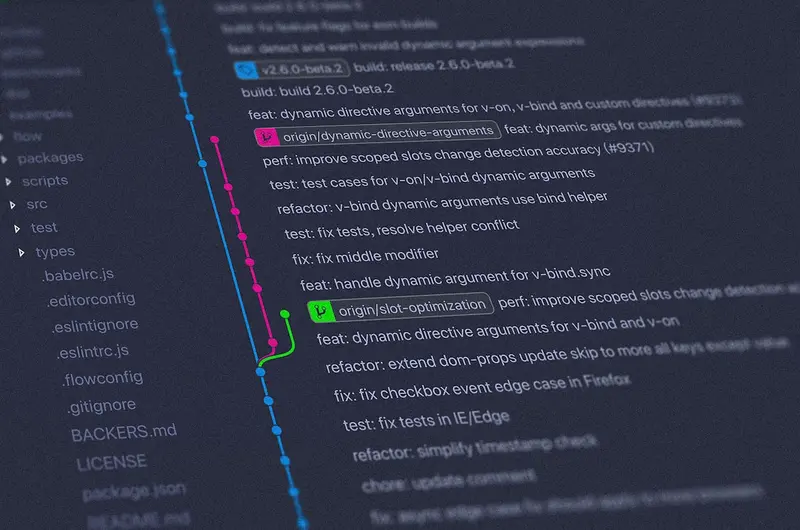GitOps has revolutionized how we deploy and manage applications in Kubernetes environments. This comprehensive guide will walk you through implementing a complete GitOps workflow using ArgoCD on Rocky Linux, transforming your deployment process into a declarative, version-controlled, and automated system.
Understanding GitOps Principles
GitOps extends DevOps practices by using Git as the single source of truth for declarative infrastructure and applications. Key principles include:
- Declarative Configuration: Everything is defined as code
- Version Control: All changes are tracked in Git
- Automated Synchronization: Desired state is automatically applied
- Continuous Reconciliation: Drift detection and correction
- Pull-based Deployments: Enhanced security and auditability
Prerequisites
Before implementing GitOps with ArgoCD, ensure you have:
- Rocky Linux 9 server (minimum 4 CPU, 8GB RAM)
- Kubernetes cluster (v1.24 or later)
- kubectl configured for cluster access
- Git repository (GitHub, GitLab, or Bitbucket)
- Basic understanding of Kubernetes concepts
- SSL certificates (for production)
Setting Up the Foundation
Installing Required Tools on Rocky Linux
Start by preparing your Rocky Linux system:
# Update system packages
sudo dnf update -y
# Install essential tools
sudo dnf install -y git curl wget vim jq
# Install kubectl
curl -LO "https://dl.k8s.io/release/$(curl -L -s https://dl.k8s.io/release/stable.txt)/bin/linux/amd64/kubectl"
sudo install -o root -g root -m 0755 kubectl /usr/local/bin/kubectl
# Install helm
curl https://raw.githubusercontent.com/helm/helm/main/scripts/get-helm-3 | bash
# Verify installations
kubectl version --client
helm versionSetting Up a Kubernetes Cluster
For this guide, we’ll use K3s for simplicity:
# Install K3s on Rocky Linux
curl -sfL https://get.k3s.io | sh -s - --write-kubeconfig-mode 644
# Wait for K3s to be ready
sudo systemctl status k3s
# Configure kubectl
mkdir -p ~/.kube
sudo cp /etc/rancher/k3s/k3s.yaml ~/.kube/config
sudo chown $(id -u):$(id -g) ~/.kube/config
# Verify cluster is running
kubectl get nodes
kubectl get pods -AInstalling ArgoCD
Deploy ArgoCD to Kubernetes
Create a dedicated namespace and install ArgoCD:
# Create ArgoCD namespace
kubectl create namespace argocd
# Install ArgoCD
kubectl apply -n argocd -f https://raw.githubusercontent.com/argoproj/argo-cd/stable/manifests/install.yaml
# Wait for all pods to be ready
kubectl wait --for=condition=Ready pods --all -n argocd --timeout=300s
# Check ArgoCD components
kubectl get all -n argocdConfiguring ArgoCD for Production
Create a production-ready configuration:
# argocd-server-config.yaml
apiVersion: v1
kind: ConfigMap
metadata:
name: argocd-server-config
namespace: argocd
data:
url: "https://argocd.example.com"
application.instanceLabelKey: argocd.argoproj.io/instance
server.insecure: "false"
admin.enabled: "true"
dex.config: |
connectors:
- type: github
id: github
name: GitHub
config:
clientID: $dex.github.clientID
clientSecret: $dex.github.clientSecret
orgs:
- name: your-org
resource.customizations: |
admissionregistration.k8s.io/MutatingWebhookConfiguration:
ignoreDifferences: |
jsonPointers:
- /webhooks/0/clientConfig/caBundle
resource.compareoptions: |
ignoreAggregatedRoles: true
---
apiVersion: v1
kind: Service
metadata:
name: argocd-server-nodeport
namespace: argocd
spec:
type: NodePort
ports:
- name: https
port: 443
protocol: TCP
targetPort: 8080
nodePort: 30443
selector:
app.kubernetes.io/name: argocd-serverApply the configuration:
kubectl apply -f argocd-server-config.yamlSetting Up Ingress for ArgoCD
Configure NGINX ingress for ArgoCD:
# argocd-ingress.yaml
apiVersion: networking.k8s.io/v1
kind: Ingress
metadata:
name: argocd-server-ingress
namespace: argocd
annotations:
kubernetes.io/ingress.class: nginx
nginx.ingress.kubernetes.io/ssl-redirect: "true"
nginx.ingress.kubernetes.io/backend-protocol: "HTTPS"
cert-manager.io/cluster-issuer: "letsencrypt-prod"
spec:
tls:
- hosts:
- argocd.example.com
secretName: argocd-server-tls
rules:
- host: argocd.example.com
http:
paths:
- path: /
pathType: Prefix
backend:
service:
name: argocd-server
port:
number: 443Configuring ArgoCD CLI
Installing ArgoCD CLI on Rocky Linux
# Download ArgoCD CLI
curl -sSL -o /usr/local/bin/argocd https://github.com/argoproj/argo-cd/releases/latest/download/argocd-linux-amd64
# Make it executable
sudo chmod +x /usr/local/bin/argocd
# Verify installation
argocd versionInitial Login and Configuration
# Get initial admin password
ARGOCD_PASSWORD=$(kubectl -n argocd get secret argocd-initial-admin-secret -o jsonpath="{.data.password}" | base64 -d)
echo "Initial password: $ARGOCD_PASSWORD"
# Login to ArgoCD
argocd login argocd.example.com --username admin --password $ARGOCD_PASSWORD
# Change admin password
argocd account update-password \
--current-password $ARGOCD_PASSWORD \
--new-password YourNewSecurePassword
# Delete initial admin secret
kubectl -n argocd delete secret argocd-initial-admin-secretCreating Your First GitOps Repository
Repository Structure
Create a well-organized Git repository structure:
# Create repository structure
mkdir -p my-gitops-repo/{applications,environments,clusters}
cd my-gitops-repo
# Create base structure
cat > README.md << 'EOF'
# GitOps Repository
This repository contains all Kubernetes manifests for our applications.
## Structure
- `/applications` - Application definitions
- `/environments` - Environment-specific configurations
- `/clusters` - Cluster-specific configurations
## Usage
ArgoCD monitors this repository and automatically syncs changes to the cluster.
EOF
# Initialize git repository
git init
git add .
git commit -m "Initial commit"Application Manifests
Create a sample application structure:
# applications/sample-app/base/kustomization.yaml
apiVersion: kustomize.config.k8s.io/v1beta1
kind: Kustomization
resources:
- deployment.yaml
- service.yaml
- configmap.yaml
commonLabels:
app: sample-app
version: v1.0.0
---
# applications/sample-app/base/deployment.yaml
apiVersion: apps/v1
kind: Deployment
metadata:
name: sample-app
spec:
replicas: 3
selector:
matchLabels:
app: sample-app
template:
metadata:
labels:
app: sample-app
spec:
containers:
- name: sample-app
image: nginx:1.21
ports:
- containerPort: 80
resources:
requests:
memory: "64Mi"
cpu: "250m"
limits:
memory: "128Mi"
cpu: "500m"
env:
- name: ENVIRONMENT
valueFrom:
configMapKeyRef:
name: sample-app-config
key: environment
---
# applications/sample-app/base/service.yaml
apiVersion: v1
kind: Service
metadata:
name: sample-app
spec:
selector:
app: sample-app
ports:
- port: 80
targetPort: 80
type: ClusterIP
---
# applications/sample-app/base/configmap.yaml
apiVersion: v1
kind: ConfigMap
metadata:
name: sample-app-config
data:
environment: "base"
log_level: "info"Environment Overlays
Create environment-specific configurations:
# environments/development/kustomization.yaml
apiVersion: kustomize.config.k8s.io/v1beta1
kind: Kustomization
namespace: development
resources:
- namespace.yaml
- ../../applications/sample-app/base
patchesStrategicMerge:
- deployment-patch.yaml
- configmap-patch.yaml
images:
- name: nginx
newTag: 1.21-alpine
---
# environments/development/namespace.yaml
apiVersion: v1
kind: Namespace
metadata:
name: development
---
# environments/development/deployment-patch.yaml
apiVersion: apps/v1
kind: Deployment
metadata:
name: sample-app
spec:
replicas: 1
template:
spec:
containers:
- name: sample-app
resources:
requests:
memory: "32Mi"
cpu: "100m"
limits:
memory: "64Mi"
cpu: "200m"
---
# environments/development/configmap-patch.yaml
apiVersion: v1
kind: ConfigMap
metadata:
name: sample-app-config
data:
environment: "development"
log_level: "debug"Configuring ArgoCD Applications
Creating an App-of-Apps Pattern
Implement the app-of-apps pattern for better organization:
# clusters/production/apps/root-app.yaml
apiVersion: argoproj.io/v1alpha1
kind: Application
metadata:
name: root-app
namespace: argocd
finalizers:
- resources-finalizer.argocd.argoproj.io
spec:
project: default
source:
repoURL: https://github.com/your-org/gitops-repo
targetRevision: main
path: clusters/production/apps
destination:
server: https://kubernetes.default.svc
namespace: argocd
syncPolicy:
automated:
prune: true
selfHeal: true
allowEmpty: false
syncOptions:
- CreateNamespace=true
retry:
limit: 5
backoff:
duration: 5s
factor: 2
maxDuration: 3m
---
# clusters/production/apps/sample-app.yaml
apiVersion: argoproj.io/v1alpha1
kind: Application
metadata:
name: sample-app-production
namespace: argocd
finalizers:
- resources-finalizer.argocd.argoproj.io
spec:
project: default
source:
repoURL: https://github.com/your-org/gitops-repo
targetRevision: main
path: environments/production
destination:
server: https://kubernetes.default.svc
namespace: production
syncPolicy:
automated:
prune: true
selfHeal: true
syncOptions:
- CreateNamespace=true
revisionHistoryLimit: 3Registering Your Git Repository
# Add repository to ArgoCD
argocd repo add https://github.com/your-org/gitops-repo \
--username your-username \
--password your-token
# List registered repositories
argocd repo list
# Create the root application
kubectl apply -f clusters/production/apps/root-app.yaml
# Check application status
argocd app list
argocd app get root-appAdvanced ArgoCD Configuration
Multi-Cluster Management
Configure ArgoCD for multi-cluster deployments:
# Add external cluster
argocd cluster add production-cluster \
--name production \
--kubeconfig /path/to/kubeconfig
# List clusters
argocd cluster list
# Create cluster-specific application
cat > clusters/production/cluster-config.yaml << 'EOF'
apiVersion: argoproj.io/v1alpha1
kind: Application
metadata:
name: production-cluster-config
namespace: argocd
spec:
project: default
source:
repoURL: https://github.com/your-org/gitops-repo
targetRevision: main
path: clusters/production/config
destination:
name: production
namespace: kube-system
syncPolicy:
automated:
prune: true
selfHeal: true
EOFRBAC Configuration
Implement fine-grained access control:
# argocd-rbac.yaml
apiVersion: v1
kind: ConfigMap
metadata:
name: argocd-rbac-cm
namespace: argocd
data:
policy.default: role:readonly
policy.csv: |
p, role:admin, applications, *, */*, allow
p, role:admin, clusters, *, *, allow
p, role:admin, repositories, *, *, allow
p, role:developer, applications, get, */*, allow
p, role:developer, applications, sync, */*, allow
p, role:developer, applications, action/*, */*, allow
p, role:developer, logs, get, */*, allow
p, role:developer, exec, create, */*, allow
g, your-org:developers, role:developer
g, your-org:admins, role:admin
scopes: '[groups]'Secrets Management
Implement secure secrets management with Sealed Secrets:
# Install Sealed Secrets controller
kubectl apply -f https://github.com/bitnami-labs/sealed-secrets/releases/download/v0.18.0/controller.yaml
# Install kubeseal CLI
wget https://github.com/bitnami-labs/sealed-secrets/releases/download/v0.18.0/kubeseal-0.18.0-linux-amd64.tar.gz
tar -xvf kubeseal-0.18.0-linux-amd64.tar.gz
sudo install -m 755 kubeseal /usr/local/bin/kubeseal
# Create a secret
echo -n mypassword | kubectl create secret generic mysecret \
--dry-run=client \
--from-file=password=/dev/stdin \
-o yaml | kubeseal -o yaml > mysealedsecret.yaml
# Commit sealed secret to Git
git add mysealedsecret.yaml
git commit -m "Add sealed secret"
git pushImplementing CI/CD Integration
GitHub Actions Integration
Create a GitHub Actions workflow for automated deployments:
# .github/workflows/deploy.yaml
name: Deploy to ArgoCD
on:
push:
branches:
- main
paths:
- 'applications/**'
- 'environments/**'
jobs:
update-manifests:
runs-on: ubuntu-latest
steps:
- name: Checkout code
uses: actions/checkout@v3
- name: Setup Kustomize
uses: imranismail/setup-kustomize@v1
- name: Update image tag
run: |
cd environments/production
kustomize edit set image myapp=myapp:${{ github.sha }}
- name: Commit and push changes
run: |
git config --local user.email "[email protected]"
git config --local user.name "GitHub Action"
git add .
git commit -m "Update image tag to ${{ github.sha }}"
git push
sync-argocd:
needs: update-manifests
runs-on: ubuntu-latest
steps:
- name: Sync ArgoCD Application
uses: omegion/[email protected]
with:
address: ${{ secrets.ARGOCD_SERVER }}
token: ${{ secrets.ARGOCD_TOKEN }}
appName: sample-app-productionGitLab CI Integration
Configure GitLab CI for GitOps:
# .gitlab-ci.yml
stages:
- build
- deploy
variables:
DOCKER_REGISTRY: registry.gitlab.com
IMAGE_TAG: $CI_COMMIT_SHORT_SHA
build:
stage: build
image: docker:latest
services:
- docker:dind
script:
- docker build -t $DOCKER_REGISTRY/$CI_PROJECT_PATH:$IMAGE_TAG .
- docker push $DOCKER_REGISTRY/$CI_PROJECT_PATH:$IMAGE_TAG
deploy:
stage: deploy
image: alpine:latest
before_script:
- apk add --no-cache git curl
- git config --global user.email "[email protected]"
- git config --global user.name "GitLab CI"
script:
- git clone https://gitlab-ci-token:${CI_JOB_TOKEN}@gitlab.com/your-org/gitops-repo.git
- cd gitops-repo/environments/production
- sed -i "s|image:.*|image: $DOCKER_REGISTRY/$CI_PROJECT_PATH:$IMAGE_TAG|g" deployment.yaml
- git add .
- git commit -m "Update image to $IMAGE_TAG"
- git push origin main
only:
- mainMonitoring and Observability
ArgoCD Metrics with Prometheus
Configure Prometheus to scrape ArgoCD metrics:
# prometheus-scrape-config.yaml
apiVersion: v1
kind: ConfigMap
metadata:
name: prometheus-config
namespace: monitoring
data:
prometheus.yml: |
global:
scrape_interval: 15s
scrape_configs:
- job_name: 'argocd-metrics'
static_configs:
- targets:
- argocd-metrics.argocd.svc.cluster.local:8082
- job_name: 'argocd-server-metrics'
static_configs:
- targets:
- argocd-server-metrics.argocd.svc.cluster.local:8083
- job_name: 'argocd-repo-server-metrics'
static_configs:
- targets:
- argocd-repo-server.argocd.svc.cluster.local:8084Grafana Dashboard for ArgoCD
Import ArgoCD dashboard to Grafana:
{
"dashboard": {
"title": "ArgoCD Dashboard",
"panels": [
{
"title": "Application Sync Status",
"targets": [
{
"expr": "sum by (sync_status) (argocd_app_info)"
}
]
},
{
"title": "Application Health Status",
"targets": [
{
"expr": "sum by (health_status) (argocd_app_health_total)"
}
]
},
{
"title": "Sync Operations",
"targets": [
{
"expr": "sum(rate(argocd_app_sync_total[5m])) by (name, phase)"
}
]
}
]
}
}Notification Configuration
Set up notifications for important events:
# argocd-notifications-cm.yaml
apiVersion: v1
kind: ConfigMap
metadata:
name: argocd-notifications-cm
namespace: argocd
data:
service.slack: |
token: $slack-token
template.app-deployed: |
message: |
{{if eq .serviceType "slack"}}:white_check_mark:{{end}} Application {{.app.metadata.name}} is now running new version.
template.app-health-degraded: |
message: |
{{if eq .serviceType "slack"}}:exclamation:{{end}} Application {{.app.metadata.name}} has degraded health.
template.app-sync-failed: |
message: |
{{if eq .serviceType "slack"}}:exclamation:{{end}} Application {{.app.metadata.name}} sync failed.
trigger.on-deployed: |
- when: app.status.operationState.phase in ['Succeeded'] and app.status.health.status == 'Healthy'
send: [app-deployed]
trigger.on-health-degraded: |
- when: app.status.health.status == 'Degraded'
send: [app-health-degraded]
trigger.on-sync-failed: |
- when: app.status.operationState.phase in ['Error', 'Failed']
send: [app-sync-failed]
subscriptions: |
- recipients:
- slack:devops-channel
triggers:
- on-deployed
- on-health-degraded
- on-sync-failedSecurity Best Practices
Implementing Security Policies
Use Open Policy Agent (OPA) for policy enforcement:
# opa-policies.yaml
apiVersion: v1
kind: ConfigMap
metadata:
name: argocd-opa-policies
namespace: argocd
data:
policy.rego: |
package argocd
# Deny deployments without resource limits
deny[msg] {
input.kind == "Deployment"
container := input.spec.template.spec.containers[_]
not container.resources.limits.memory
msg := sprintf("Container %v does not have memory limits", [container.name])
}
# Require specific labels
deny[msg] {
required_labels := ["app", "version", "environment"]
provided_labels := input.metadata.labels
missing := required_labels[_]
not provided_labels[missing]
msg := sprintf("Missing required label: %v", [missing])
}
# Prevent privilege escalation
deny[msg] {
input.kind == "Deployment"
container := input.spec.template.spec.containers[_]
container.securityContext.privileged == true
msg := sprintf("Container %v has privileged access", [container.name])
}Network Policies
Implement network segmentation:
# network-policies.yaml
apiVersion: networking.k8s.io/v1
kind: NetworkPolicy
metadata:
name: argocd-network-policy
namespace: argocd
spec:
podSelector:
matchLabels:
app.kubernetes.io/part-of: argocd
policyTypes:
- Ingress
- Egress
ingress:
- from:
- namespaceSelector:
matchLabels:
name: argocd
- podSelector: {}
ports:
- protocol: TCP
port: 8083
egress:
- to:
- namespaceSelector: {}
ports:
- protocol: TCP
port: 443
- protocol: TCP
port: 22Troubleshooting Common Issues
Debugging Sync Failures
# Check application sync status
argocd app get sample-app-production
# View sync details
argocd app sync sample-app-production --dry-run
# Check application logs
kubectl logs -n argocd deployment/argocd-application-controller
# Force refresh
argocd app get sample-app-production --refresh
# Debug resource differences
argocd app diff sample-app-productionPerformance Optimization
Configure ArgoCD for large-scale deployments:
# argocd-cm-performance.yaml
apiVersion: v1
kind: ConfigMap
metadata:
name: argocd-cm
namespace: argocd
data:
# Increase resource limits
controller.status.processors: "50"
controller.operation.processors: "25"
controller.self.heal.timeout.seconds: "300"
controller.repo.server.timeout.seconds: "300"
# Enable caching
reposerver.disable.helm.manifest.max.extracted.size: "false"
reposerver.parallelism.limit: "10"
# Optimize Git operations
timeout.reconciliation: "180s"
timeout.hard.reconciliation: "0s"Disaster Recovery
Backup and Restore Procedures
Implement backup strategies:
#!/bin/bash
# backup-argocd.sh
# Backup ArgoCD resources
kubectl get applications -n argocd -o yaml > argocd-applications-backup.yaml
kubectl get appprojects -n argocd -o yaml > argocd-projects-backup.yaml
kubectl get repositories -n argocd -o yaml > argocd-repositories-backup.yaml
# Backup secrets (encrypted)
kubectl get secrets -n argocd -o yaml | \
kubeseal -o yaml > argocd-sealed-secrets-backup.yaml
# Backup ConfigMaps
kubectl get configmaps -n argocd -o yaml > argocd-configmaps-backup.yaml
# Create backup archive
tar -czf argocd-backup-$(date +%Y%m%d-%H%M%S).tar.gz *.yaml
# Upload to S3 (optional)
aws s3 cp argocd-backup-*.tar.gz s3://backup-bucket/argocd/Best Practices Summary
- Repository Structure: Maintain clear separation between applications, environments, and clusters
- Version Control: Tag releases and maintain proper branching strategies
- Security: Use RBAC, sealed secrets, and network policies
- Monitoring: Implement comprehensive monitoring and alerting
- Documentation: Keep README files updated in your GitOps repository
- Testing: Always test changes in development before production
- Automation: Minimize manual interventions
- Disaster Recovery: Regular backups and tested restore procedures
Conclusion
Implementing GitOps with ArgoCD on Rocky Linux provides a robust, scalable, and secure way to manage Kubernetes deployments. By following the practices outlined in this guide, you’ll have a production-ready GitOps workflow that enhances deployment reliability, improves security, and accelerates your development velocity.
Remember that GitOps is a journey, not a destination. Start simple, iterate often, and gradually expand your GitOps practices as your team becomes more comfortable with the workflow.




